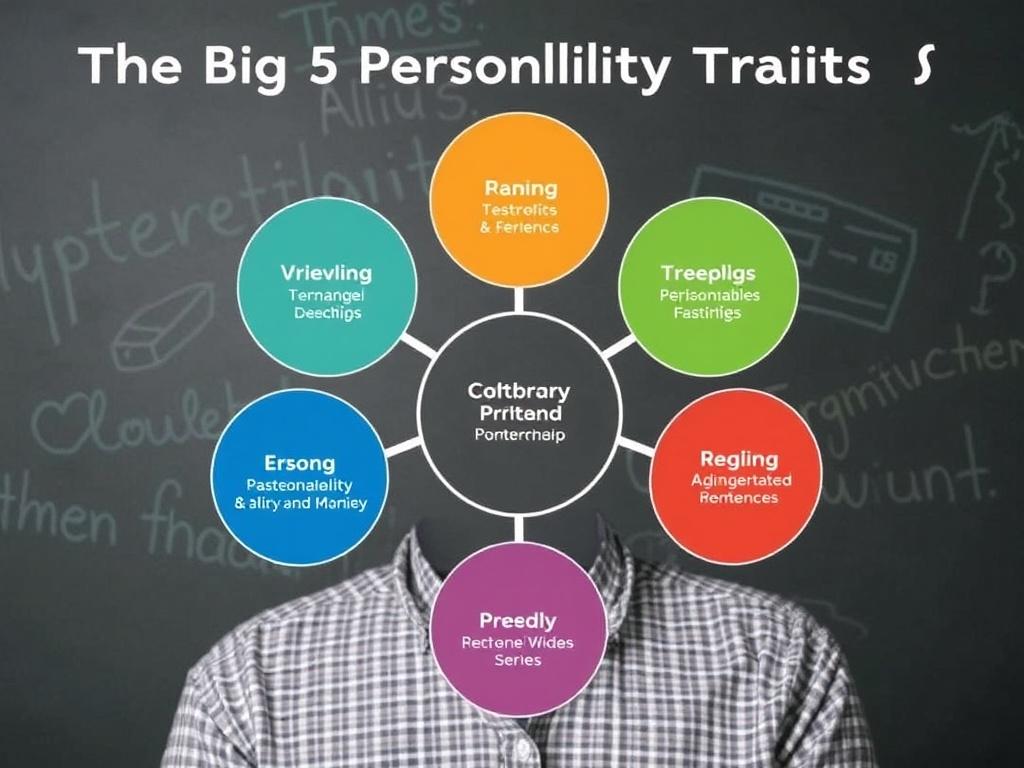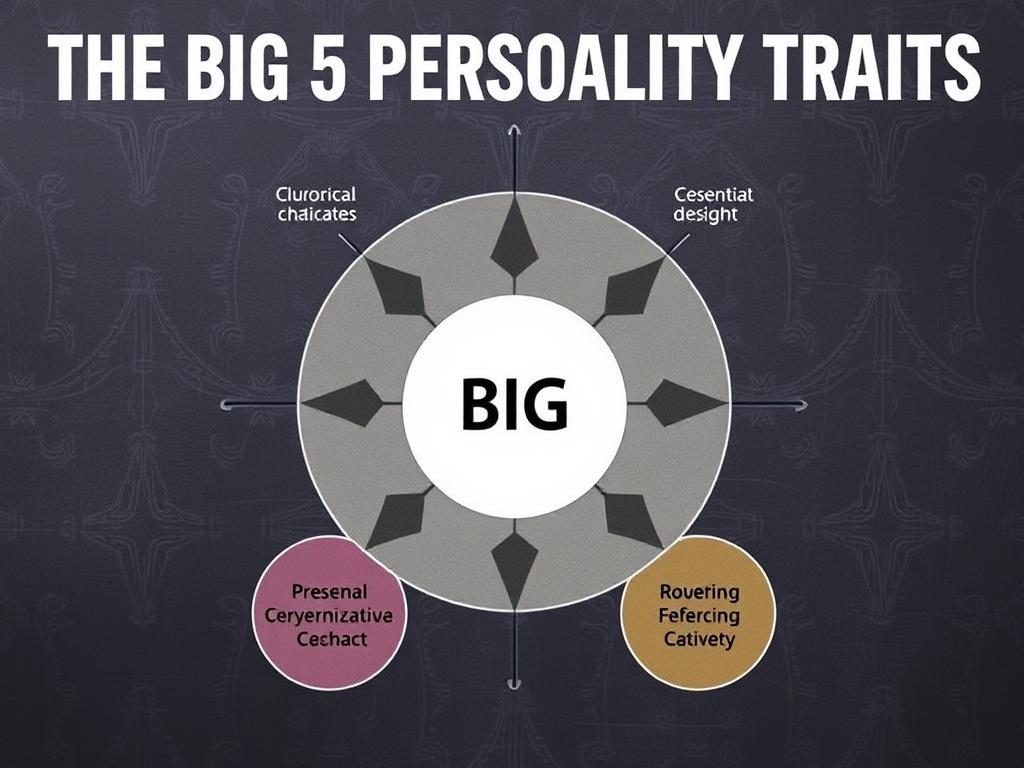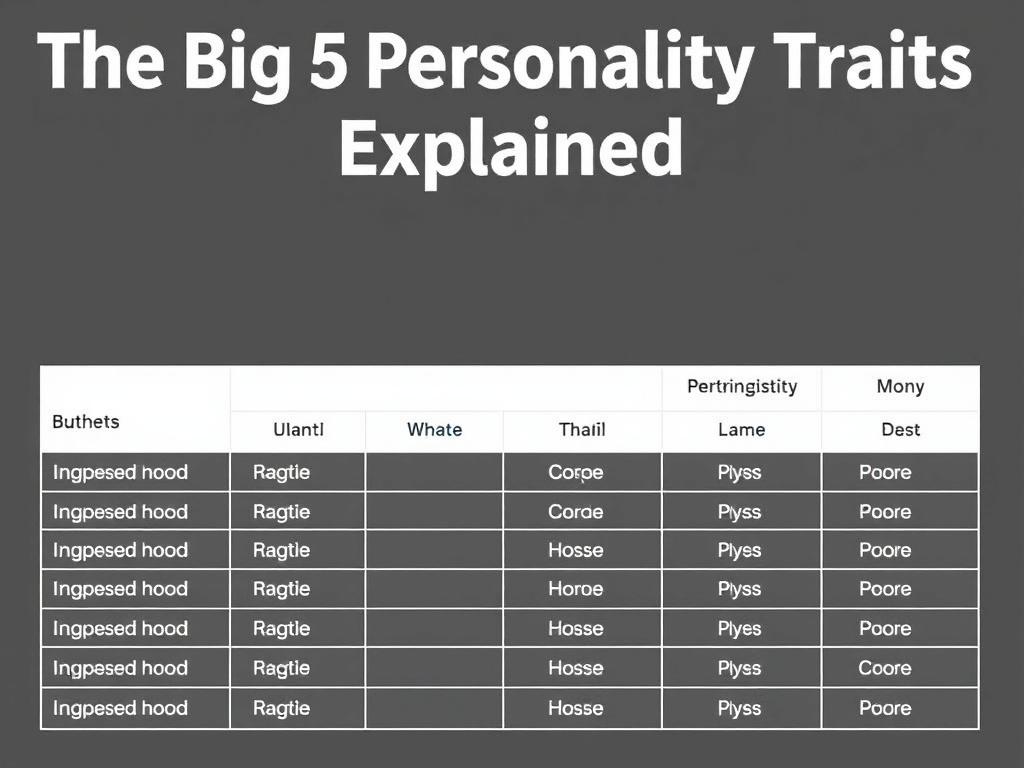Understanding personality has fascinated humans for centuries. We often wonder why some people are outgoing while others are reserved, or why some handle stress better than others. Enter the Big 5 personality traits—a widely accepted model in psychology that breaks down personality into five broad dimensions. These traits offer a window into how we think, feel, and behave, helping us understand ourselves and those around us better. If you’ve ever been curious about personality psychology or wanted to see how these traits might influence your daily life, this article will walk you through everything you need to know about the Big 5 personality traits, step by step.
What Are the Big 5 Personality Traits?
The Big 5 personality traits, also known as the Five-Factor Model, consist of five broad categories that capture the essence of human personality. These five traits are often remembered by the acronym OCEAN, representing Openness, Conscientiousness, Extraversion, Agreeableness, and Neuroticism. Unlike personality tests based on typologies or rigid categories, the Big 5 are considered continuous dimensions, meaning everyone falls somewhere on a spectrum for each trait.
Here’s a brief overview of each trait:
- Openness to Experience: This trait reflects how open-minded and imaginative a person is. Those high in openness tend to be curious, creative, and willing to explore new ideas or experiences.
- Conscientiousness: This is about being organized, dependable, and goal-oriented. People scoring high on conscientiousness are often disciplined and careful.
- Extraversion: Extroverts are outgoing, energetic, and enjoy being around people, while introverts are more reserved and prefer solitude or small groups.
- Agreeableness: This trait measures how cooperative, friendly, and compassionate a person is toward others.
- Neuroticism: Neuroticism reflects emotional stability. High scorers tend to experience mood swings, anxiety, and stress more frequently.
Each of these traits represents a broad domain that captures a significant part of a person’s typical behavior, emotions, and thought patterns. Knowing where you and others fall on these traits can provide meaningful insights that are helpful in relationships, workplaces, and personal growth.
Origins and Scientific Background of the Big 5
The Big 5 personality traits didn’t just appear overnight. The concept went through decades of research, beginning in the early 20th century. Psychologists originally tried to identify “fundamental” personality traits by asking people to describe themselves with adjectives and then analyzing those descriptors to find common patterns.
By the 1980s, researchers like Lewis Goldberg and Robert McCrae helped formalize the Big 5 using extensive research and statistical methods like factor analysis. These five traits consistently emerged, regardless of cultural differences or variations in measurement tools. This universality gave the Big 5 credibility as a reliable framework for personality psychology.
The Big 5 are now the dominant model used by psychologists to understand personality because they emphasize measurable, empirical traits rather than theoretical or vague personality types.
Digging Deeper: What Each Trait Really Means
While the brief descriptions above give a starting point, each trait contains many more layers. Understanding these nuances can help make the Big 5 more relatable and applicable in real life.
Openness to Experience
People high in openness tend to enjoy artistic activities, appreciate beauty, and are drawn to novel ideas. They often think abstractly and enjoy intellectual discussions. Conversely, those with low openness may prefer routine, familiar activities and are often more pragmatic and down-to-earth.
Traits associated with openness include:
- Imaginative
- Curious
- Creative
- Adventurous
- Open-minded
Examples of how openness plays out daily:
— Choosing to travel to new countries instead of sticking to familiar places
— Enjoying complex movies, books, or art that requires thoughtful interpretation
— Being willing to question established norms and ideas
Conscientiousness
Conscientiousness describes how disciplined and organized a person is. People high in this trait often set clear goals and are persistent in achieving them. They are reliable and prefer structure over chaos.
Characteristics commonly linked to conscientiousness include:
- Organized
- Dependable
- Thorough
- Self-disciplined
- Goal-oriented
In everyday life, conscientious individuals might:
— Keep detailed schedules or planners
— Avoid procrastination and prioritize tasks effectively
— Take responsibility seriously in both personal and professional settings
Extraversion
Extraversion measures the degree to which people seek stimulation and enjoy social interaction. High extraverts are talkative, energetic, and feel comfortable in crowds. Introverts, on the other hand, recharge by spending time alone and may prefer quieter environments.
Key qualities tied to extraversion:
- Outgoing
- Energetic
- Assertive
- Sociable
- Enthusiastic
Examples of extraversion in action:
— Being the first to start conversations at social gatherings
— Feeling energized after attending events versus drained
— Enjoying leadership roles that involve public speaking or teamwork
Agreeableness
Agreeableness reflects how kind, empathetic, and cooperative an individual tends to be. Someone high in agreeableness is often described as warm and trustworthy, whereas low agreeableness can sometimes come across as competitive or skeptical.
Common agreeableness traits include:
- Trusting
- Helpful
- Sympathetic
- Cooperative
- Modest
How agreeableness manifests in everyday life:
— Offering support to friends or colleagues in times of need
— Avoiding conflict or working diplomatically to resolve disagreements
— Volunteering or engaging in community service
Neuroticism
Neuroticism is a measure of emotional stability. People high in neuroticism often experience negative emotions more intensely, such as anxiety, sadness, or anger. Low neuroticism indicates calmness and emotional resilience.
Traits linked to neuroticism include:
- Anxious
- Moody
- Worried
- Self-conscious
- Vulnerable to stress
In practical terms, high neuroticism might look like:
— Overthinking situations and expecting the worst outcome
— Feeling overwhelmed in stressful situations
— Struggling with mood swings more than others
How the Big 5 Personality Traits Affect Your Life

Understanding the Big 5 personality traits isn’t just an academic exercise—it has real-world implications. These traits influence how you interact with others, make decisions, and respond to challenges. Let’s explore some areas where the Big 5 traits play a significant role.
Relationships
Knowing your personality traits and those of your friends or partners can improve communication and empathy. For example, an individual high in agreeableness may prefer harmony and gentle discussions, while someone lower in agreeableness might be more direct and confrontational. Recognizing this difference can prevent misunderstandings.
Similarly, differences in extraversion levels can influence social preferences. Couples where one person is an introvert and the other an extrovert might negotiate social activities differently, ensuring both parties get their needs met.
Career and Work Life
Certain job roles tend to attract or suit particular personality profiles better. For instance, people high in conscientiousness often thrive in roles requiring organization and attention to detail, such as project management or accounting. Extraverts usually excel in sales, teaching, or leadership positions that involve frequent interaction with others.
Here’s a table to illustrate potential job fits for each Big 5 trait:
| Trait | Positive Work Strengths | Potential Job Types |
|---|---|---|
| Openness | Creative thinking, adaptability | Artist, writer, designer, researcher |
| Conscientiousness | Reliable, detail-oriented, disciplined | Accountant, engineer, manager |
| Extraversion | Social skills, enthusiasm | Salesperson, teacher, public relations |
| Agreeableness | Team player, empathetic, diplomatic | Counselor, nurse, customer service |
| Neuroticism (Low) | Emotional stability, calm under pressure | Emergency responder, pilot, executive roles |
Mental Health and Well-being
Research shows strong correlations between the Big 5 traits and mental health. High neuroticism, for example, is linked to a higher likelihood of anxiety and depression. On the flip side, high conscientiousness and agreeableness often predict better coping skills and stronger social support, which boost resilience.
Being aware of your own personality traits can guide you in developing self-care strategies. For example, if you score high on neuroticism, practicing mindfulness or stress management techniques may be particularly beneficial.
Personal Growth
The Big 5 traits aren’t fixed; they can change over time through intentional effort and experience. Knowing your Big 5 profile can help identify areas for growth—for example, boosting conscientiousness to become more organized or working on openness to embrace new experiences.
Keeping a personality journal or taking regular self-assessments can help track your development and maintain motivation for self-improvement.
How Are the Big 5 Personality Traits Measured?
There are several scientifically validated questionnaires to measure the Big 5 personality traits, many of which you can take online for free or through professional assessments. The most popular and research-backed is the NEO Personality Inventory (NEO-PI), which dives deep into the five traits and their sub-facets.
Below are some common ways Big 5 traits are assessed:
- NEO-PI-R: A detailed 240-item questionnaire, widely used in research and clinical settings.
- BFI (Big Five Inventory): A shorter 44-item survey, popular for quick assessments.
- TIPI (Ten-Item Personality Inventory): A very brief 10-question version for casual or introductory use.
These tools ask participants to rate statements like “I am someone who is talkative” or “I get stressed out easily” on scales ranging from strongly disagree to strongly agree. Your answers help generate scores for each trait, usually displayed as a percentile compared to a general population.
The Big 5 Across Cultures and Age Groups
One fascinating aspect of the Big 5 personality traits is their relative universality. Studies have found these five broad traits are relevant across many different cultures, suggesting common biological or evolutionary roots.
At the same time, cultural factors influence how traits manifest. For instance, extraversion may express differently in a culture that values collective harmony compared to one that celebrates individualism.
Age also affects personality traits. Research indicates that as people grow older, they tend to become more conscientious and agreeable, while neuroticism often decreases, helping explain why many mature individuals develop better emotional stability.
Common Misconceptions About the Big 5

Because the Big 5 traits are so popular, some myths surround them. Let’s clear up a few common misconceptions:
- Myth: The Big 5 define your entire personality and cannot change.
Reality: These traits describe broad tendencies and can shift over time with life experience and conscious effort. - Myth: High or low scores are “good” or “bad.”
Reality: No trait is inherently better. All have strengths and challenges depending on context. - Myth: The Big 5 can predict everything you do.
Reality: Personality is one factor among many influences like environment, culture, and situation.
How to Use the Big 5 Personality Traits in Daily Life
Integrating knowledge of the Big 5 into your life doesn’t require deep psychological expertise. Here are practical tips for applying these insights:
- In Relationships: Communicate your needs openly based on your trait profile to reduce misunderstandings.
- At Work: Leverage your strengths linked to your traits and find ways to manage weaker areas.
- For Personal Growth: Identify which traits you want to develop and seek out books, courses, or habits that support that.
- Self-Reflection: Use the Big 5 framework as a guide for journaling or discussing self-awareness with friends or coaches.
Summary Table of the Big 5 Personality Traits

| Trait | Description | Positive Characteristics | Challenges |
|---|---|---|---|
| Openness | Imagination and openness to new experiences | Creative, curious, adventurous | Can be impractical or unpredictable |
| Conscientiousness | Self-discipline and organization | Dependable, efficient, diligent | May be perfectionistic or rigid |
| Extraversion | Sociability and enthusiasm | Outgoing, energetic, assertive | Can be impulsive or attention-seeking |
| Agreeableness | Cooperation and compassion | Kind, trusting, helpful | May avoid conflict or be overly trusting |
| Neuroticism | Emotional instability and sensitivity to stress | Vigilant, sensitive, reflective | Prone to anxiety and moodiness |
Conclusion
The Big 5 personality traits provide a powerful framework for understanding human behavior in all its complexity and variation. By breaking down personality into openness, conscientiousness, extraversion, agreeableness, and neuroticism, we gain insights not only into who we are but also into how we relate to others, face challenges, and grow. These traits are not fixed labels but fluid dimensions that can evolve, helping us become more self-aware and intentional in how we live our lives. Whether you’re curious about your own personality, aiming to improve relationships, or seeking greater success in your career, the Big 5 offer a simple yet profound guide to unlocking the mysteries of what makes you, you.





















Наконец-то кто-то просто и понятно объяснил эти Big 5! Теперь точно понимаю, почему я такая, какая есть – все благодаря нейротизму и экстраверсии! Очень круто!